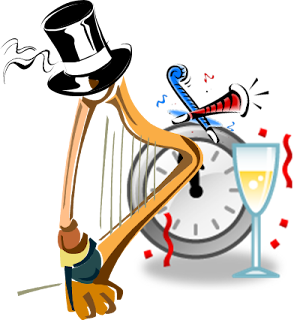It is easy to get the winter blahs – the sun comes up late, it sets early. When you go out you have to bundle up – which makes the sun have a harder time getting to you to help block the blahs. But we have a secret (or not really secret) weapon – you can use your harp to help keep those blahs at bay.
We already know that music can facilitate healing – physical and mental. There are research studies indicating that live music directly impacts healing. What could be better than playing to yourself? You can’t help but be there so be present when you’re playing, concentrate on the vibration on your shoulder, the tone, and the just having fun part of playing!
So, sit by a window, play music you enjoy, revel in the tone, the feel of your harp, and sheer enjoyment of playing the music – and feel the blahs retreat…hopefully until spring!




